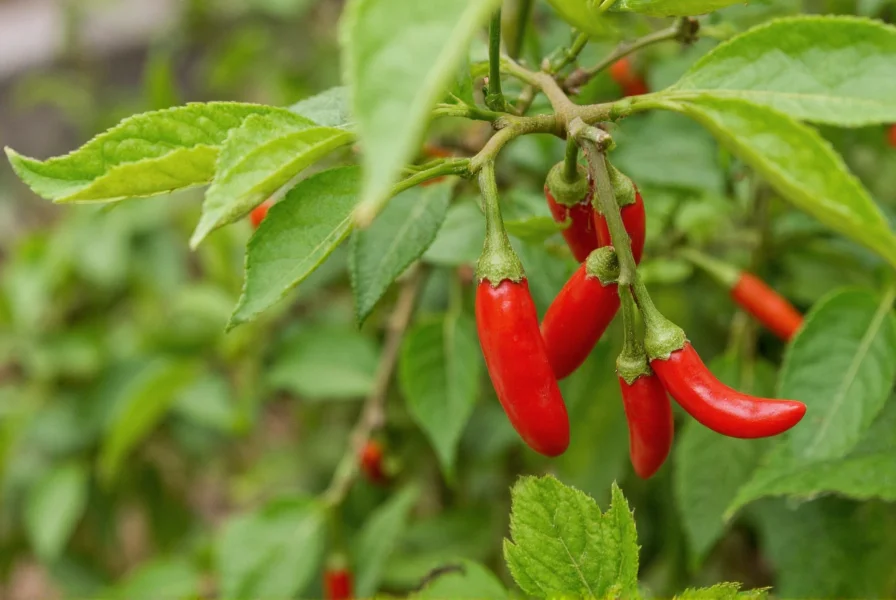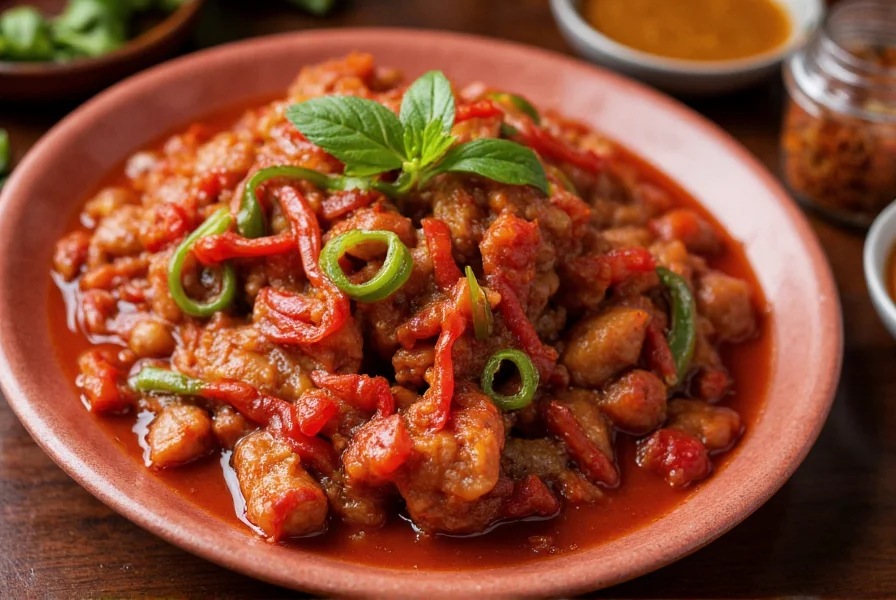The jueyun chili represents one of China's most prized regional pepper varieties, embodying centuries of agricultural tradition in西南地区 (southwestern China). While not as internationally recognized as the famousFacing Heaven chili, jueyun holds significant culinary importance in authentic Sichuan and Yunnan cooking traditions. This article explores the distinctive characteristics, cultivation practices, and culinary applications of this remarkable pepper that has become increasingly sought after by chili enthusiasts worldwide.
Origins and Regional Significance
Jueyun chili cultivation traces back to mountainous regions of Sichuan province, where specific microclimates create ideal growing conditions. The name "jueyun" (绝云) translates to "cutting through clouds," referencing both the pepper's sharp heat and the high-altitude cloud forests where it traditionally grows. Unlike commercially standardized peppers, authentic jueyun chili varies slightly between villages, with each region developing unique strains adapted to local soil conditions and culinary preferences.
Historical records indicate jueyun chili has been cultivated for over 300 years, becoming integral to Sichuan cuisine's development. Unlike many modern hybrid varieties, traditional jueyun strains maintain genetic diversity through open pollination, preserving distinctive flavor compounds that industrial varieties often lack. This genetic diversity explains why genuine jueyun chili exhibits subtle variations in heat and flavor depending on its specific growing region within southwestern China.

Physical Characteristics and Heat Profile
Jueyun chili peppers typically measure 4-6 inches in length with a tapered shape and slightly wrinkled skin when mature. The peppers transition from green to vibrant red as they ripen, developing their characteristic heat and complex flavor profile. Unlike many commercial chilies that prioritize uniformity, authentic jueyun chili shows natural variation in size and shape, reflecting its traditional cultivation methods.
| Characteristic | Jueyun Chili | Comparison to Common Varieties |
|---|---|---|
| Scoville Heat Units | 50,000-75,000 SHU | Hotter than jalapeño (2,500-8,000 SHU), milder than ghost pepper (855,000-1,041,427 SHU) |
| Flavor Notes | Smoky, slightly sweet, with citrus undertones | More complex than cayenne, less fruity than habanero |
| Best Harvest Time | Late summer to early autumn | Later than most commercial varieties |
| Plant Height | 24-36 inches | Shorter than many commercial varieties |
What distinguishes jueyun chili from similar varieties is its unique heat progression. Unlike abrupt-heat peppers, jueyun delivers a gradual warmth that builds to a significant but manageable intensity, making it particularly valued in traditional Chinese cooking where balanced heat is essential. The heat primarily concentrates in the placenta and seeds, with the flesh offering more of the pepper's distinctive flavor.
Culinary Applications and Traditional Uses
In authentic Sichuan cuisine, jueyun chili serves multiple purposes beyond mere heat. Chefs prize it for the "ma la" (numbing-spicy) sensation when combined with Sichuan peppercorns. Unlike generic chili flakes, properly prepared jueyun chili contributes both heat and aromatic complexity to dishes. Traditional applications include:
- Dry-fried preparations where whole peppers are toasted to release essential oils
- Infused oils that capture the pepper's essence without overwhelming heat
- Fermented pastes that develop deeper flavor complexity over time
- Whole peppers used in braises where they impart flavor without disintegrating
Professional chefs emphasize that genuine jueyun chili requires different handling than common supermarket chilies. The peppers benefit from dry toasting before use, which enhances their natural citrus notes while mellowing excessive heat. When substituting in recipes, understanding jueyun chili heat level compared to alternatives is crucial for maintaining authentic flavor balance.

Availability and Sourcing Authentic Jueyun Chili
Finding authentic jueyun chili outside China presents challenges due to inconsistent labeling and substitution practices. Many products marketed as "jueyun" are actually generic Chinese chilies. True indicators of authentic jueyun chili include:
- Specific regional designation (Sichuan or Yunnan origin)
- Natural variation in size and shape (not uniform like commercial hybrids)
- Distinctive wrinkled texture when dried
- Complex flavor profile beyond simple heat
For those seeking where to buy authentic jueyun chili, specialty Asian markets with direct import connections offer the best chance. Online retailers specializing in authentic Chinese ingredients may carry genuine products, but careful verification of sourcing is essential. When purchasing dried jueyun chili, look for deep, rich color without excessive brittleness, which indicates proper drying and storage.
Preservation and Storage Techniques
Proper storage significantly impacts jueyun chili's shelf life and flavor retention. Unlike many chilies that lose complexity when dried, properly preserved jueyun maintains its distinctive characteristics for extended periods. Traditional preservation methods include:
- Air-drying whole peppers in shaded, well-ventilated areas
- Infusing in high-quality oil to create versatile cooking medium
- Fermenting with salt to develop deeper umami notes
- Storing dried peppers in airtight containers with rice to absorb moisture
For optimal flavor retention, store dried jueyun chili away from light and heat sources. When stored properly, dried peppers maintain quality for 12-18 months, while infused oils should be used within 6 months for best flavor. Freezing fresh peppers is possible but alters texture, making them better suited for cooked applications rather than fresh use.
Safety Considerations When Handling Jueyun Chili
Due to its significant heat level, proper handling of jueyun chili requires precautions. The capsaicin concentration necessitates:
- Wearing gloves when handling fresh peppers
- Avoiding contact with eyes and sensitive skin
- Washing hands thoroughly with soap after preparation
- Using ventilation when cooking with large quantities
Those sensitive to capsaicin should exercise particular caution with jueyun chili. Unlike milder varieties, even small amounts can cause significant discomfort if mishandled. Having dairy products available while cooking provides immediate relief should accidental contact occur, as capsaicin dissolves in fats rather than water.
Conclusion: The Enduring Appeal of Jueyun Chili
Jueyun chili represents more than just a source of heat—it embodies centuries of culinary tradition from China's southwestern regions. Its distinctive balance of heat, flavor complexity, and culinary versatility explains its enduring popularity among chefs seeking authentic Sichuan flavors. Understanding the genuine characteristics of jueyun chili versus imitations helps enthusiasts appreciate its unique contribution to global chili diversity. As interest in regional Chinese ingredients grows, preserving the authenticity of traditional varieties like jueyun becomes increasingly important for maintaining culinary heritage.
What is the exact heat level of jueyun chili compared to other common peppers?
Jueyun chili measures between 50,000-75,000 Scoville Heat Units (SHU), placing it significantly hotter than jalapeños (2,500-8,000 SHU) but milder than ghost peppers (855,000+ SHU). It's comparable to the upper range of cayenne peppers but with a more complex flavor profile and gradual heat progression rather than immediate intense burn.
How can I verify if I'm purchasing authentic jueyun chili rather than a substitute variety?
Authentic jueyun chili shows natural variation in size and shape (not uniform), has a distinctive wrinkled texture when dried, and originates specifically from Sichuan or Yunnan provinces. Genuine products will mention these regions specifically rather than using generic terms like "Chinese chili." The flavor should include citrus notes and complex heat progression, not just simple spiciness.
What are the best culinary applications for jueyun chili in home cooking?
For home cooking, jueyun chili works best when dry-toasted first to enhance its natural citrus notes. It's excellent for making infused chili oils, adding to braises, or incorporating into dry spice blends. Unlike some hotter peppers, jueyun provides balanced heat that complements rather than overwhelms dishes. Start with one or two peppers in recipes and adjust according to your heat tolerance, remembering that the heat builds gradually.
How should I store fresh or dried jueyun chili to maintain maximum flavor?
Store fresh jueyun chili in the refrigerator's crisper drawer for up to two weeks. For longer storage, dry the peppers completely in a shaded, well-ventilated area, then store in airtight containers with a moisture absorber like rice. Keep dried peppers away from light and heat sources. Properly stored, dried jueyun chili maintains optimal flavor for 12-18 months. Infused oils should be refrigerated and used within 6 months.
Are there any safety concerns specific to handling jueyun chili that differ from common supermarket chilies?
Yes, due to its higher heat concentration, jueyun chili requires more precautions than milder varieties like jalapeños. Always wear gloves when handling fresh peppers, avoid touching your face, and ensure good ventilation when cooking with multiple peppers. The capsaicin in jueyun chili can cause significant discomfort if it contacts sensitive areas. Having dairy products nearby provides immediate relief if accidental contact occurs, as capsaicin dissolves in fats rather than water.











 浙公网安备
33010002000092号
浙公网安备
33010002000092号 浙B2-20120091-4
浙B2-20120091-4